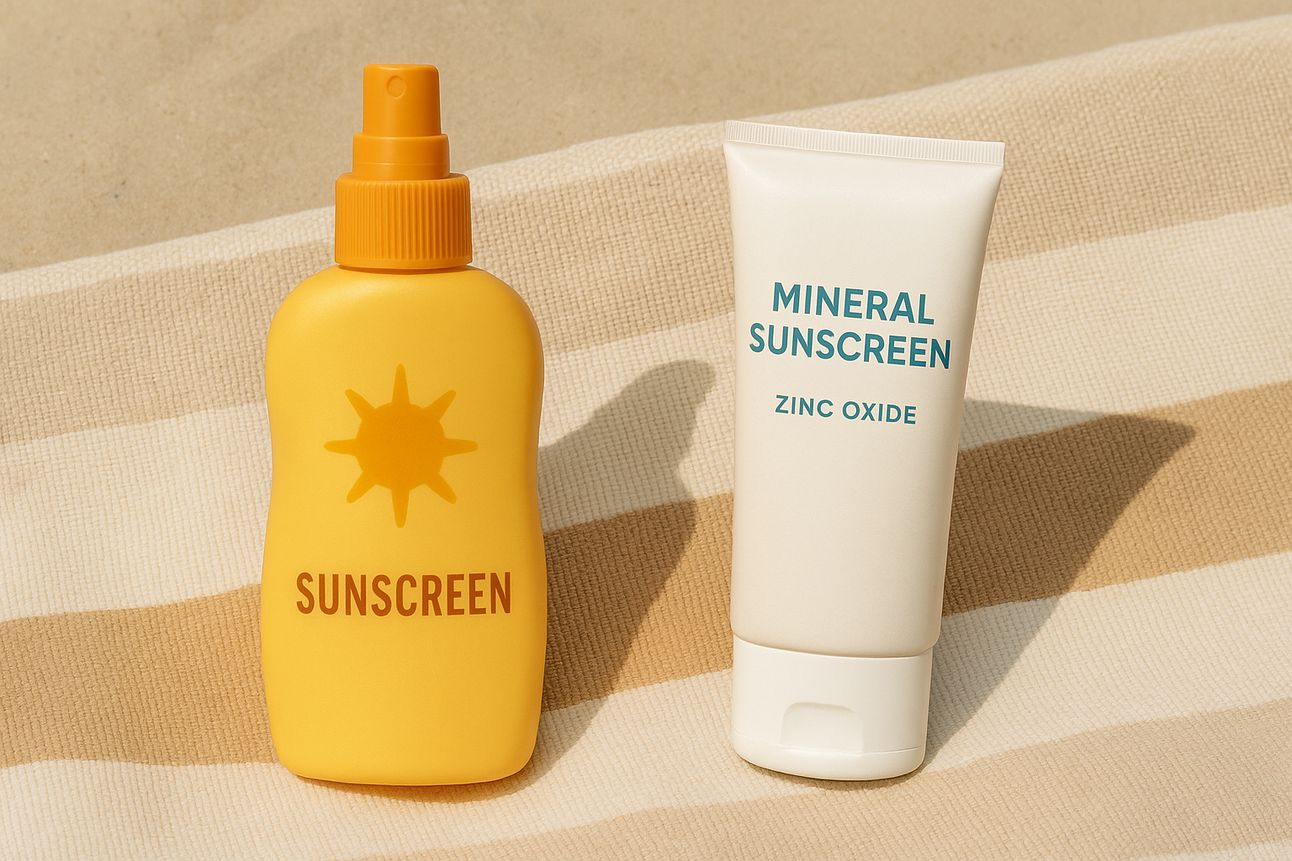Many popular chemical sunscreens contain oxybenzone and octinoxate
A 2024 investigation by the Environmental Working Group (EWG) found that many popular chemical sunscreens still contain oxybenzone and octinoxate—two UV filters linked to hormone disruption and environmental damage.

These ingredients were banned in Hawaii due to coral reef harm, but they’re still legal and widely used across the U.S.
Oxybenzone was found in over 25% of non-mineral sunscreens tested
It’s absorbed through the skin and detected in blood, urine, and even breast milk.
Studies link it to estrogen disruption, thyroid issues, and allergic skin reactions.

It’s also toxic to marine life—and sticks around in the environment.
Spray and gel formulas tend to be worse offenders than lotion-based alternatives.
Not all SPFs are created equal
You’re doing the right thing by wearing sunscreen. But not all SPFs are created equal.

The wrong formula could introduce endocrine disruptors into your system—especially concerning for kids, pregnant people, and frequent beachgoers.
What to avoid + safer alternatives
Look for zinc oxide or titanium dioxide on the label (these are mineral blockers, not hormone-altering filters).
Avoid oxybenzone and octinoxate, especially in spray-on and chemical sunscreens.

Your toxin free recap
🧠 Oxybenzone and octinoxate are UV filters found in many chemical sunscreens.
🚩 Linked to hormone disruption, skin allergies, and environmental damage.
✅ Use mineral sunscreens with zinc oxide or titanium dioxide instead.
🌿 Spray and gel SPFs = more risk. Stick with lotion.

Sharing is caring
Forward this newsletter to a friend or family member
Follow us for weekly reports and healthy swaps:

Stay informed, share the love—and as always, live healthy and happy!
The No Toxins Club 💚

